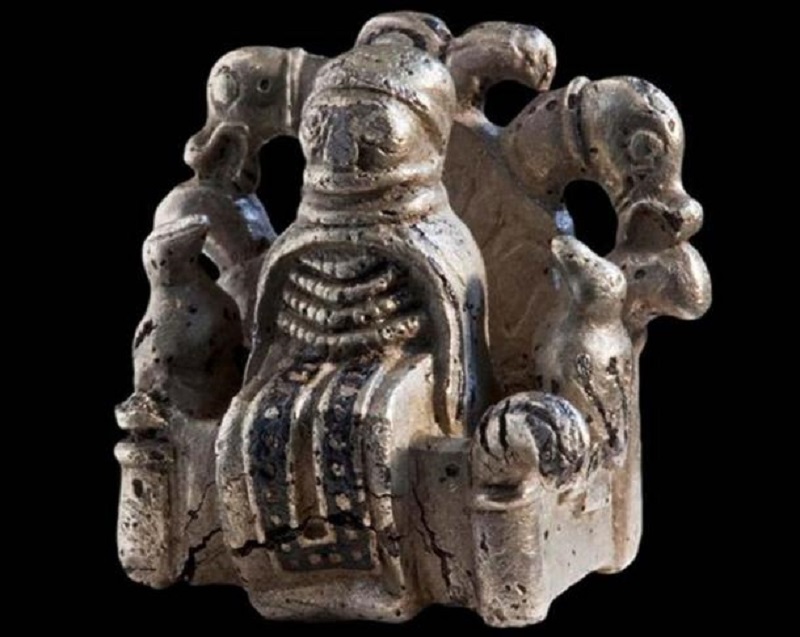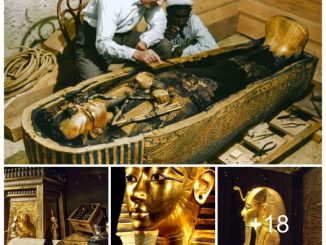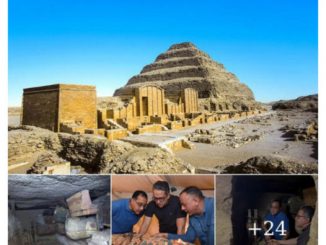In the fall of 2015, a unique Viking Age spiral ring with two wolf heads was found in Goa in Randaberg, Western Norway. The ring features Odin’s two wolves, Geri and Freki – or is it the Fenris Wolf, symbolizing Ragnarok and the end of the world?
Bjørn Tjelta, a member of the Rygene Metal Detectors Club, found the gold-plated silver ring in a field buried only 10 cm (4 in) underground. It dates from 900 to 1000 AD, and is about 23 mm (0.9 in) in diameter.
The ring weighs 5.4 grams (0.2 oz) and bears similarities to Viking Age finger rings and medieval finger rings.
Similar to many people today, the Vikings feared wolves because they were a real threat to humans and livestock. The beast is therefore considered a mythical attribute and plays a central role in Norse mythology.
Odin’s two wolves
Odin has many animals: a horse, two crows, a pig and two wolves.
Odin’s eight-legged horse Sleipnir was the fastest of all horses, and it could run on land, on water, through mountains, and through the air.
On each shoulder, Odin has his two ravens, Huginn and Muninn (“Thinking” and “Memory”). They can see every movement on earth and hear every sound. Nothing can be kept secret from Huginn and Muninn.
Gammel Lejre’s silver statue: Odin sitting on a high chair with crows and wolves (Photo: National Museum of Denmark)
He also owned the pig Sæhrímnir which provided food for everyone in Vallhalla. The pig is killed and eaten every night, then comes back to life the next day.
According to Norse mythology, Odin’s two wolves, Geri (“Greed”) and Freki (“Fierce”), lay at Odin’s feet and helped him in war. If Odin was served food, he would immediately send it to the wolves.
In 2009, a small silver statue was discovered during excavations of Old Lejre in Denmark. The figurine dates to around 900 AD and shows Odin sitting on the high chair Hlidskjalf, surrounded by the ravens Huginn and Muninn. The decoration behind the throne features two wolves Geri and Freki.
Was it a Viking warrior who wore a ring from Goa that featured Odin’s two wolves, and could the ring provide magical protection in battle?
Fenris Wolf
In Norse mythology, Fenris (Old Norse: Fenrisúlfr or Fenrir) is a wolf monster, son of Loki and Angrboða, “the bringer of sorrow.” It has two siblings, Hel and Midgard Serpent, and two half-siblings, Nari and Váli.

The offspring of Angerboda and Loki: Fenris the Wolf, Midgard Serpent and Hel – all have central roles in the events of Ragnarok. (Illustration: Willy Pogany, 1920).
In both the Poetic Edda and Prose Edda, Fenris the Wolf kills Odin in Ragnarok, but is ultimately killed by Odin’s son, Víðarr.
Does the ring from Goa symbolize the Wolf Fenris and Ragnarok, and that the end of the world is near?
The answer to the question has unfortunately disappeared along with one of the most fascinating cultures in history.
Top image: What did this ring with two wolf heads symbolize to the Viking who wore it? (Photo: Lars Søgaard Sørensen, Rogaland County Municipality)



